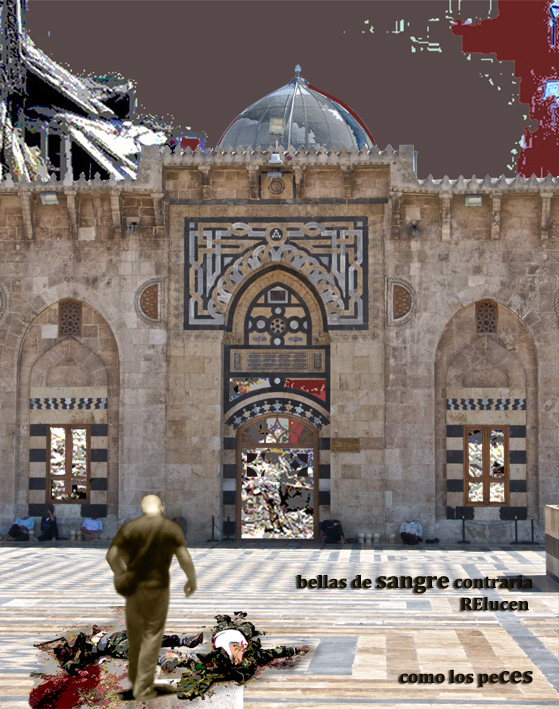Aleppo is one of the oldest continuously inhabited cities in the world; it has been inhabited since perhaps as early as the 6th millennium BC. Excavations at Tell as-Sawda and Tell al-Ansari, just south of the old city of Aleppo, show that the area was occupied since at least the latter part of the 3rd millennium BC; and this is also when Aleppo is first mentioned in cuneiform tablets unearthed in Ebla and Mesopotamia, in which it is noted for its commercial and military proficiency. Such a long history is probably due to its being a strategic trading point midway between the Mediterranean Sea and Mesopotamia.
|
|

January 2013
In 1260, the entire mosque was razed by the Mongols. The courtyard and minaret of the mosque were renovated in 2003.
Over the weekend of 13 October 2012, the mosque was seriously damaged during clashes between the armed groups of the Free Syrian Army and the Syrian Army forces.
* THE IMAGE
The central image of the picture is the Grate Mosque. Behind, a picture of the destruction of the city of Aleppo and the picture of a foreign person who has to confront himself with killed people at his feets and the destruction around him.
| The poem: REYERTA By Federico García Lorca |
|---|
| En la mitad del barranco las navajas de Albacete, bellas de sangre contraria, relucen como los peces. Una dura luz de naipe recorta en el agrio verde, caballos enfurecidos y perfiles de jinetes. En la copa de un olivo lloran dos viejas mujeres. El toro de la reyerta se sube por las paredes. Ángeles negros traían pañuelos y agua de nieve. Ángeles con grandes alas de navajas de Albacete. Juan Antonio el de Montilla rueda muerto la pendiente, su cuerpo lleno de lirios y una granada en las sienes. Ahora monta cruz de fuego, carretera de la muerte. |
| BORDERS |
|---|